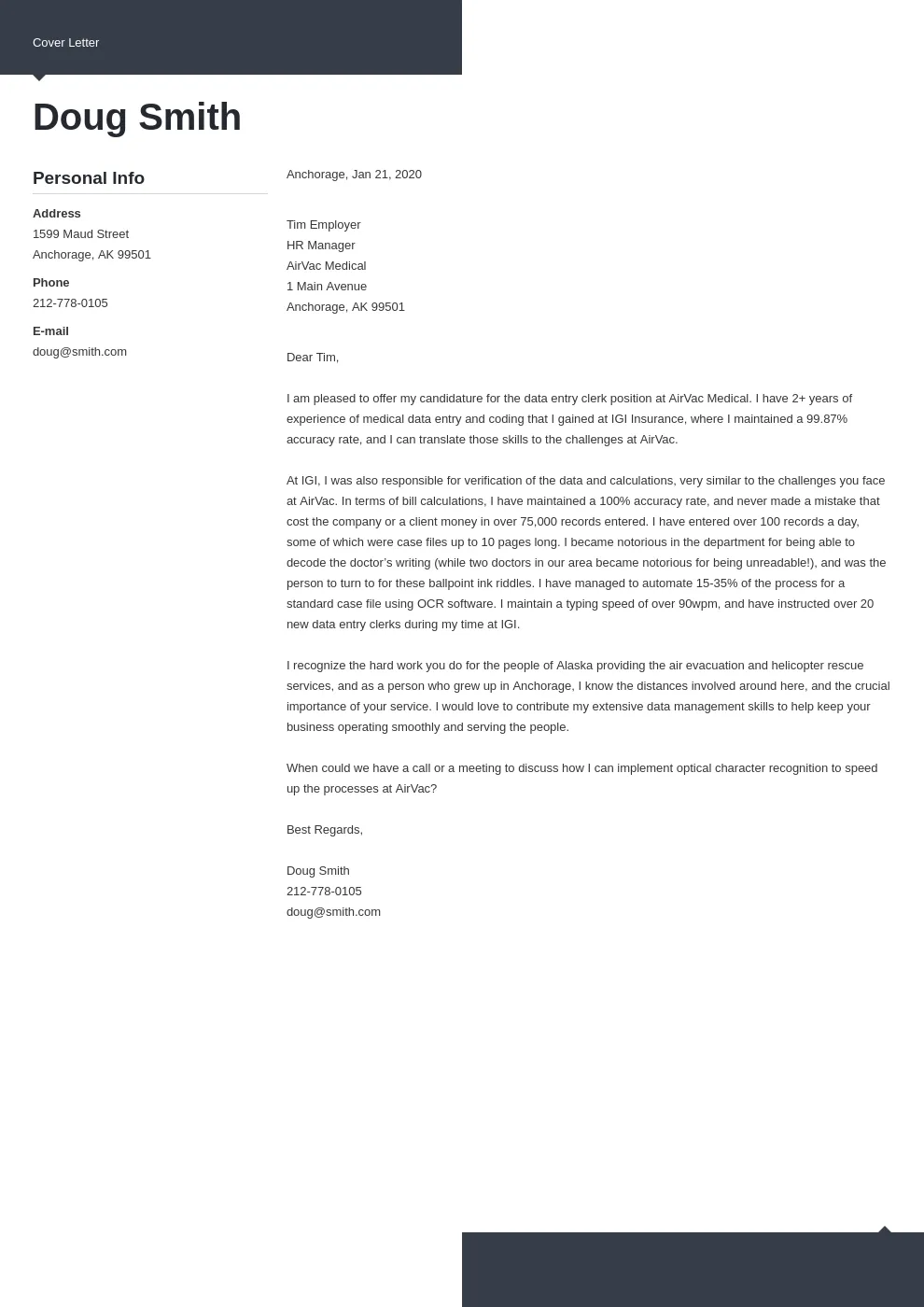Crafting a Winning Cover Letter
A well-crafted cover letter is your first opportunity to make a positive impression and demonstrate why you’re the ideal candidate for a data entry position. It’s not just a formality, but a critical tool in showcasing your skills, experience, and enthusiasm for the role. Data entry jobs often receive numerous applications, and a standout cover letter can significantly increase your chances of getting noticed by potential employers. It allows you to go beyond the bullet points of your resume and tell a compelling story that highlights your suitability for the specific job. A strong cover letter shows that you’ve taken the time to understand the job requirements and are genuinely interested in the opportunity.
Understanding the Data Entry Job Market
Before you start writing, gain insights into the current data entry job market. Research the types of roles available, the skills most in-demand, and the typical requirements employers seek. This research will inform the content of your cover letter. Consider whether you are applying for a remote or in-office position, as this can affect the skills emphasized. Furthermore, understanding the market helps you tailor your cover letter to the specific needs and expectations of the employer. It is important to use the job description as a guide for the keywords. This ensures your cover letter aligns well with the needs of the hiring manager. Look at industry trends to highlight the most relevant skills and your experience to secure a data entry job.
Researching the Company and Role
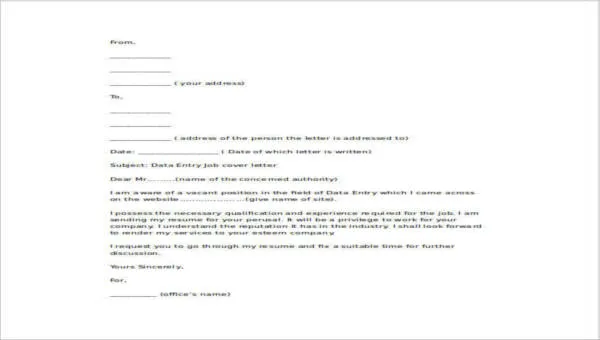
Demonstrate your interest and initiative by researching the company and the specific role. Visit the company website, read news articles, and check social media to understand their mission, values, and recent projects. This information will help you tailor your cover letter to align with the company’s culture and the specific job requirements. The more you know about the company and the role, the better you can demonstrate how your skills and experience match their needs. In your cover letter, mention specific projects or initiatives that resonate with you. This shows that you’ve gone the extra mile to understand the organization and are genuinely interested in contributing to their success. This also gives you a competitive edge, separating you from candidates who submit generic applications.
Highlighting Relevant Skills and Experience
Focus on the skills and experience most relevant to the data entry position. Review the job description carefully and identify the key requirements. Highlight your skills, such as accuracy, speed, attention to detail, and proficiency in data entry software. Give examples of how you’ve used these skills in previous roles or projects. Provide specific examples of how you have successfully managed data, met deadlines, and maintained accuracy. Emphasize the positive outcomes achieved through your efforts. For example, you might mention how you reduced errors, improved data quality, or contributed to increased efficiency in a past role. Tailor each cover letter to match the specific skills outlined in the job description, this ensures your application effectively targets the employer’s needs.
Showcasing Your Technical Proficiency
Data entry roles often require proficiency in specific software and systems. Mention any relevant software skills, such as Microsoft Excel, Google Sheets, or other data management tools. If the job description mentions specific software, be sure to highlight your experience with them. Include your typing speed and any experience with data entry systems like CRM software. You might mention any experience with specialized software relevant to the industry. Provide specific examples of how you’ve used these skills in your past roles. This demonstrates you are prepared to hit the ground running from day one. Mentioning your ability to quickly learn new software is another valuable skill. This shows that you are adaptable and willing to embrace new technologies.
Demonstrating Strong Attention to Detail
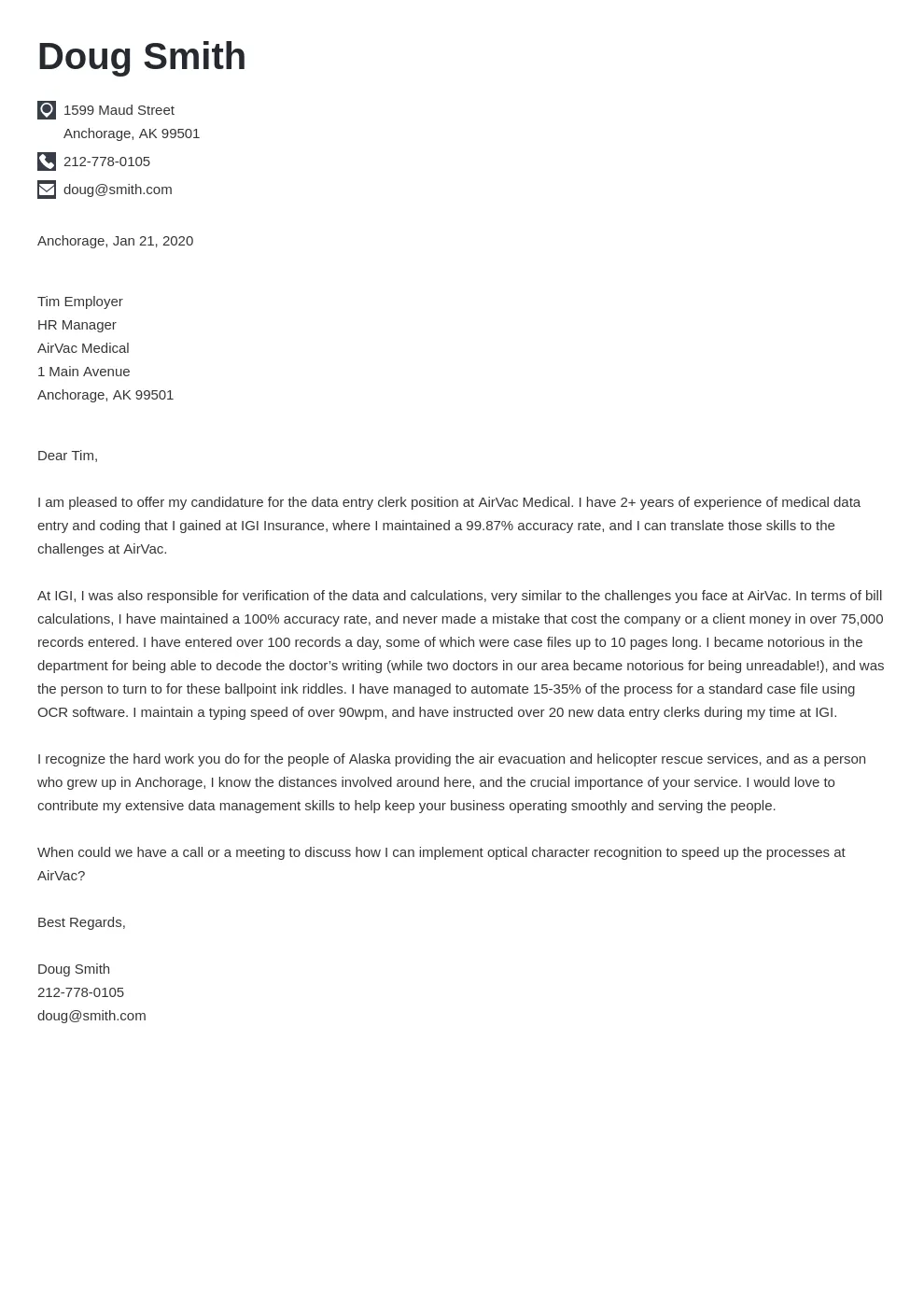
Attention to detail is crucial in data entry. Show that you understand this by highlighting your commitment to accuracy. Give examples of how you’ve ensured data accuracy in previous roles. If possible, include details on how you’ve maintained a low error rate. Mention any quality control processes you’ve used to verify data. Examples could include cross-checking data, using validation tools, or following standard operating procedures. Quantify your achievements whenever possible. For example, you could state the percentage reduction in errors you achieved or the number of records you processed accurately per hour. This provides concrete evidence of your skills and demonstrates your commitment to precision. This level of detail is important in a data entry cover letter and will help you land the job.
Emphasizing Communication and Soft Skills
While data entry is often seen as a technical role, strong communication and soft skills are essential for success. Highlight your ability to communicate clearly and professionally. This is important when communicating with colleagues or clients. Mention any experience with teamwork. Show that you can work effectively in a team, whether it’s in an office or remote setting. Explain your skills in time management. Data entry jobs often involve meeting tight deadlines. If you’ve managed multiple projects simultaneously, explain how you did so. Emphasize your willingness to learn and take feedback, and this showcases your adaptability and professionalism. Illustrating these soft skills can help you stand out and give you an advantage in getting hired.
Formatting and Structure
The formatting of your cover letter should be clean, professional, and easy to read. Use a standard font like Arial or Times New Roman, and maintain a consistent font size throughout. Keep the letter concise, typically one page. Use clear headings, bullet points, and short paragraphs to break up the text. The layout must be visually appealing. Make sure to include the date, the hiring manager’s name (if known), the company’s address, and your contact information. Begin with a professional greeting, such as “Dear Mr./Ms. [Last Name].” End with a professional closing, such as “Sincerely” or “Best regards,” followed by your name. Proofread carefully for any formatting errors. A well-formatted letter shows you pay attention to detail and that you value professionalism.
Writing a Compelling Opening Paragraph
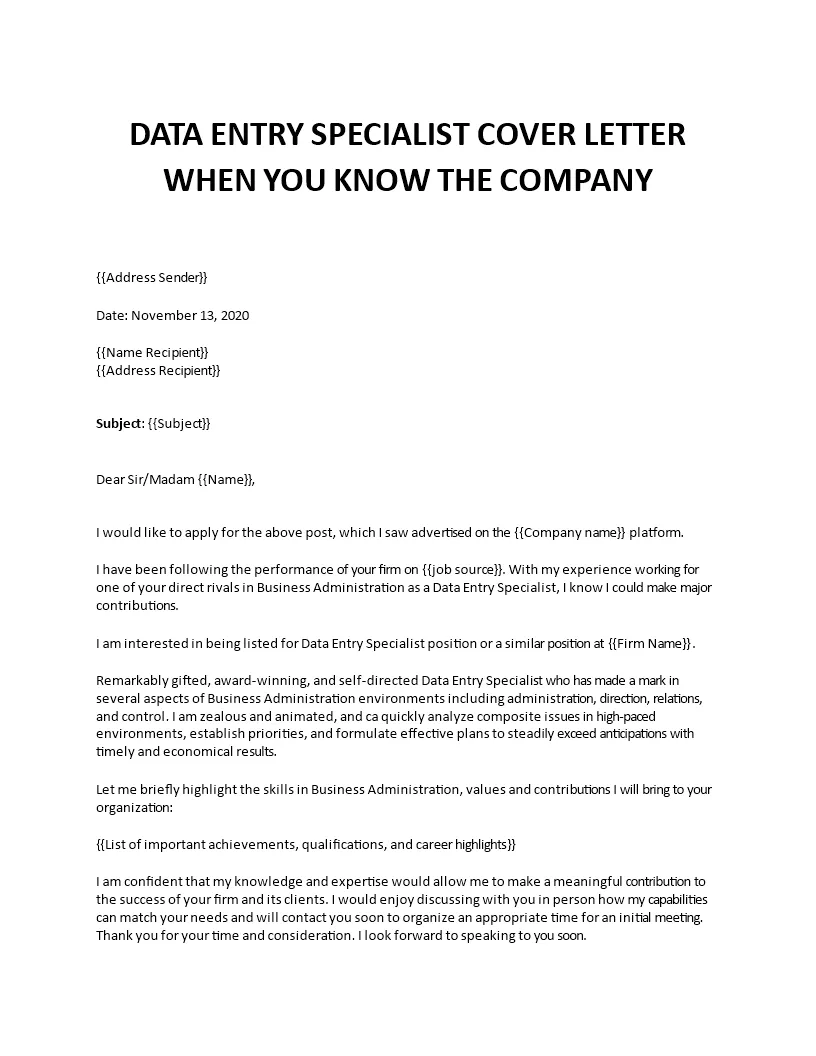
Your opening paragraph is your first chance to grab the reader’s attention. Start with a strong statement that clearly states the position you’re applying for. Express your enthusiasm for the role and the company. Briefly mention how you learned about the opportunity, whether through a job board, a referral, or the company’s website. You can also include a brief, compelling statement about your relevant skills or experience. This quickly informs the hiring manager about your suitability for the role. Make sure the opening is engaging and tailored to the specific job, making a positive first impression.
Detailing Your Relevant Experience
In the body of your letter, go into detail about your relevant experience. Focus on the responsibilities and achievements that align with the job description. Use action verbs to describe your tasks and accomplishments. Instead of simply listing your duties, explain the results of your actions. For each role, include the name of the company, your job title, and the dates of your employment. Be clear about how your previous roles have prepared you for the data entry position. This might include the types of data you worked with, the software you used, and the volume of data you processed. Provide specific examples that show your skills in action and give the hiring manager a clear picture of your capabilities. The more detail you provide, the better the chance of getting hired.
Quantifying Achievements and Skills
Whenever possible, quantify your achievements to make your accomplishments more impactful. Use numbers, percentages, and specific data to illustrate your skills. For instance, state how you improved data entry accuracy by a certain percentage. If you streamlined a process, mention how it increased efficiency or reduced processing time. If you managed a certain volume of data entries per hour or day, include those figures. When demonstrating your typing speed, include your words-per-minute (WPM) rate. Quantifying your achievements provides tangible evidence of your skills and gives the hiring manager a clear understanding of your capabilities. By quantifying your skills and achievements, you show that you are results-oriented and committed to excellence.
Closing the Letter and Call to Action
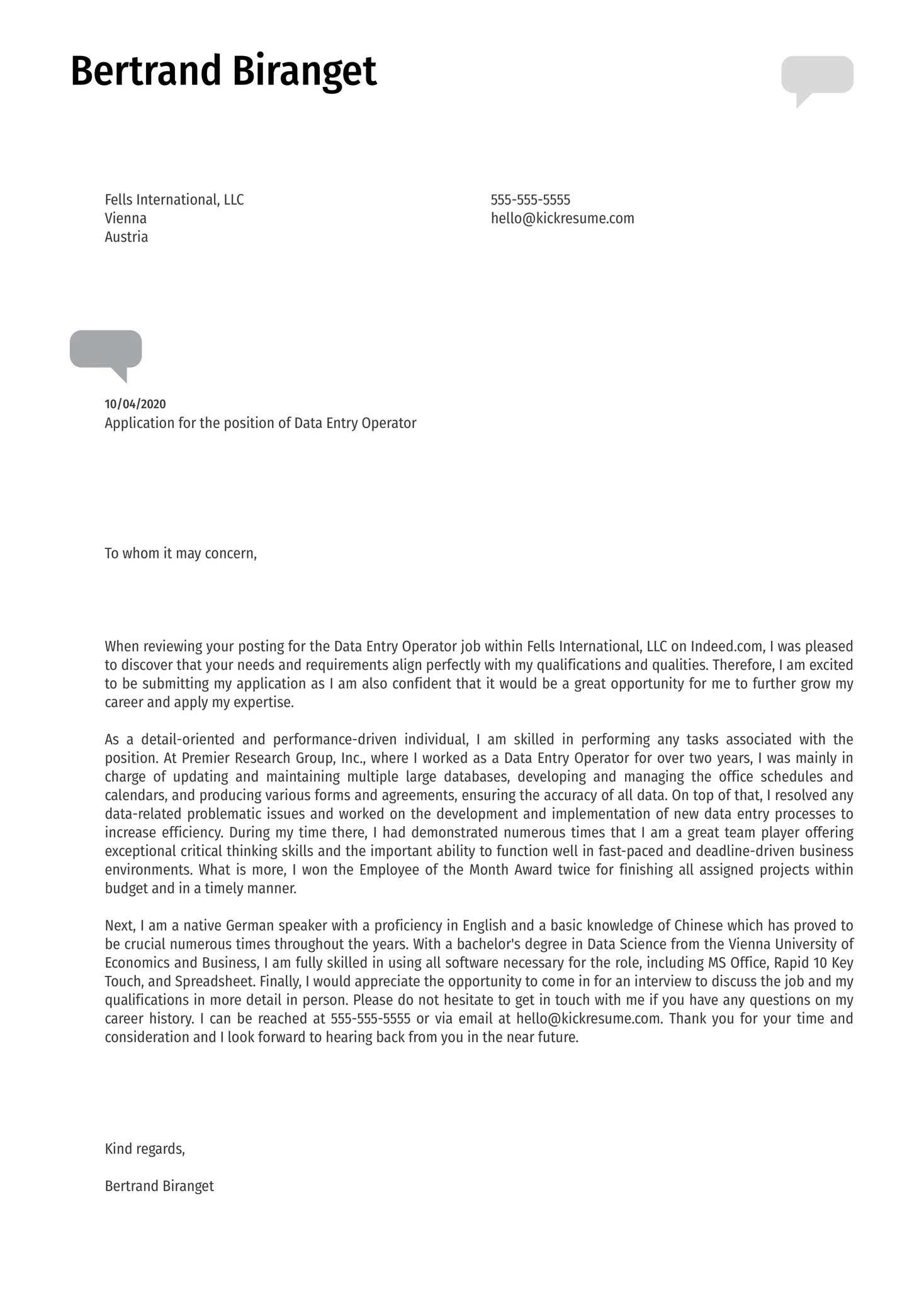
Your closing paragraph is your final opportunity to make a strong impression. Reiterate your interest in the position and the company. Summarize your key qualifications and why you are a good fit for the role. Express your availability for an interview. Provide your contact information and make it easy for the hiring manager to get in touch with you. Use a clear call to action, such as “I look forward to hearing from you” or “Thank you for your time and consideration.” This reinforces your enthusiasm and encourages the hiring manager to take the next step. Ensure you sound confident and professional.
Proofreading and Editing
Before submitting your cover letter, proofread it carefully for any errors. Check for typos, grammatical mistakes, and formatting inconsistencies. A polished cover letter shows you take pride in your work and have attention to detail. Read the letter aloud. This helps you catch awkward phrasing or sentences that don’t flow well. It’s also good to have a friend or mentor review your cover letter. A fresh pair of eyes can often spot errors that you might miss. Make sure the letter is free of any errors before you submit your application. Proofreading shows you have attention to detail and professionalism.
Tailoring Your Cover Letter for Each Job
While it’s efficient to have a template, always tailor your cover letter to each job application. Customize the content to match the specific requirements and keywords in the job description. Research the company and address the letter to the hiring manager, if possible. Mention the company’s name and express genuine enthusiasm for their work. Personalization is key to showing that you are truly interested in the role and the company. This also ensures that you address the needs of the employer. Tailoring each letter to the specific job demonstrates your interest and improves your chances of getting hired.
Review and Refine
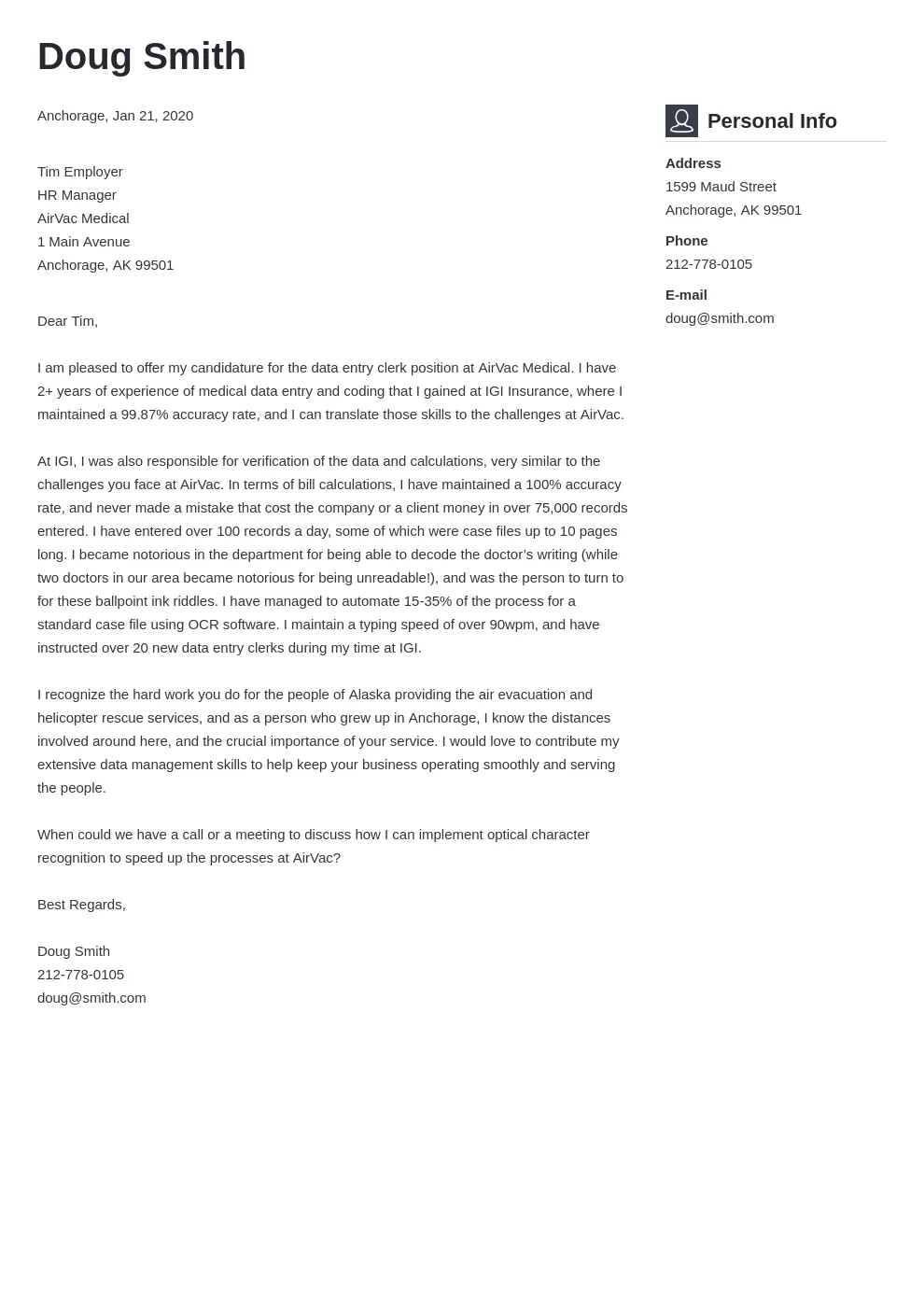
After writing your cover letter, take the time to review and refine it. Read through the letter several times, focusing on different aspects each time. Check for clarity, flow, and overall impact. Make sure each paragraph supports your main points and demonstrates your skills and experience. Consider the overall tone of the letter. Is it professional and enthusiastic? Refine any parts that sound vague or could be strengthened. Focus on the most important aspects of your qualifications and experience. Revising ensures your letter presents you in the best possible light. The more attention you give to detail, the better your chances of getting hired.
Submitting Your Cover Letter
Once you’ve written, reviewed, and refined your cover letter, it’s time to submit it. Follow the instructions provided in the job application. This might mean attaching the letter as a separate file or pasting it into an online form. Ensure your cover letter is formatted correctly and easily readable. Make sure your contact information is current and accurate, so the hiring manager can reach you. Double-check that you’ve included all required attachments. If submitting online, test the submission process to ensure everything uploads correctly. Submitting a polished, error-free cover letter shows you are professional and attentive to detail, making a positive impression and increasing your chances of getting the job.
